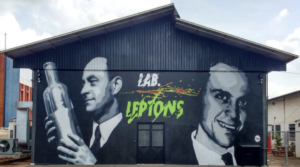 The Laboratory of Leptons is part of the Department of Cosmic Rays and Chronology. Its objective is researching particles classified as Leptons (that presents spin ½ and integer charge), mainly the neutrino. This is the lightest particle detected, after photons that presents zero rest mass. Its mass is still unknown, however there is a superior limit to this value.
The Laboratory of Leptons is part of the Department of Cosmic Rays and Chronology. Its objective is researching particles classified as Leptons (that presents spin ½ and integer charge), mainly the neutrino. This is the lightest particle detected, after photons that presents zero rest mass. Its mass is still unknown, however there is a superior limit to this value.
The neutrino does not present charge and presents weak interaction with matter, what makes difficult its detection. Still, it can be detected because of its abundance. The main sources that we can find them are Earth radioactivity, nuclear reactors, cosmic events and the sun (65 billions of neutrinos per seconds reach Earth) .
Large experiments worldwide research methods to detect them, the Laboratory of Leptons work alongside with them. Included the largest experiment of neutrino detection, the Deep Underground Neutrino Experiment (DUNE).
It is still in construction and testing, the main objectives it aims to reach are: violation of CP symmetry, proton decay and detection of supernova neutrinos, and discover the neutrinos mass hierarchy (muon, tau and electron neutrinos).
More than 1000 researchers work together to fulfill this project.
